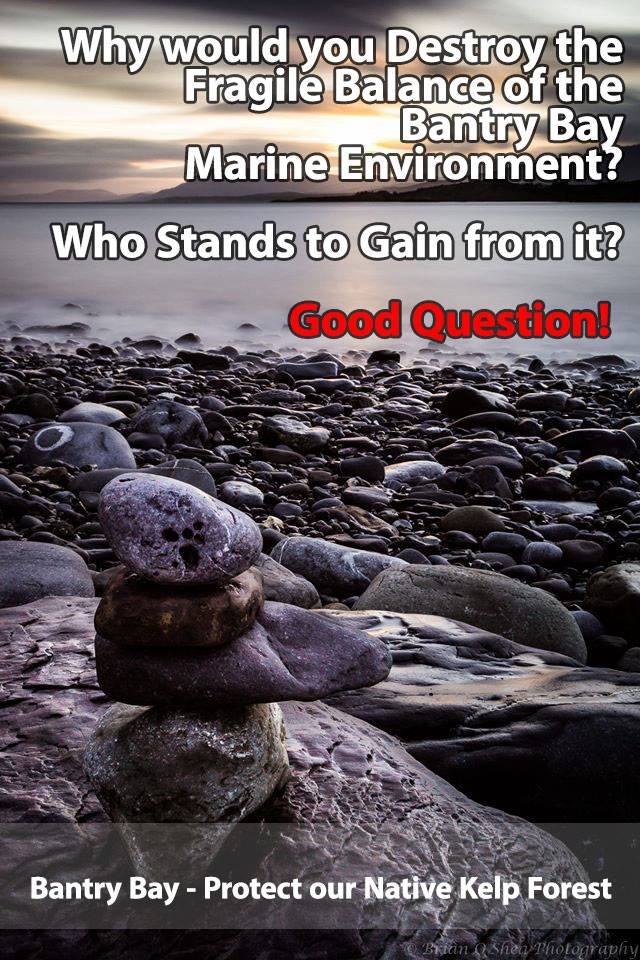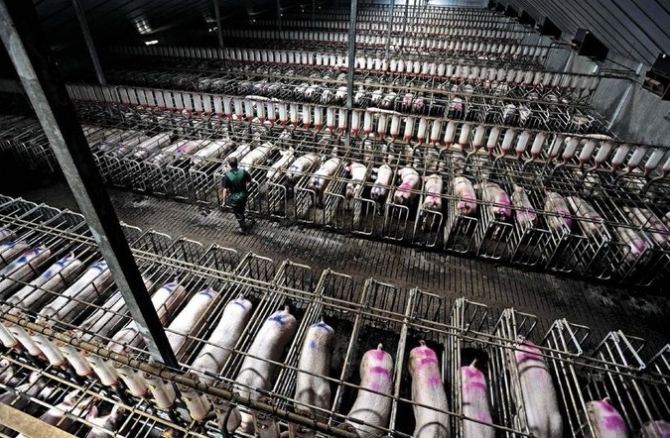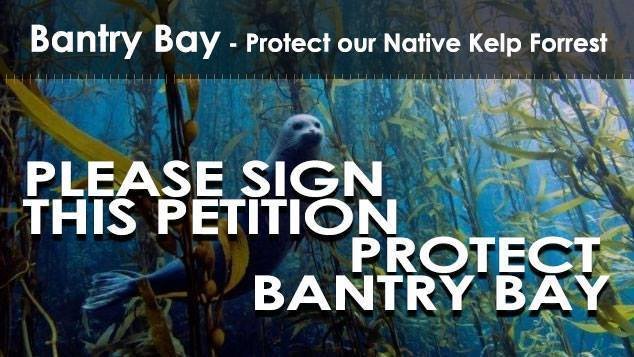Spending time in the garden is more than just a hobby for me; it is a statement on how I feel about the world. I was an angry young man as a teenager and became an activist in many different groups; I was a member of CND, Anti Apartheid, Animal Liberation, and Anti-Vivisection and spent a considerable amount of time protesting and in my mind trying to make the world a better place. I explored the philosophy of Agrarian Communalism but the juggernaut of greed signified by the rise of capitalism, consumerism and materialism driven by Thatcher and Reaganomics was just too much for me and I made a tactical retreat to the South West corner of Ireland.

Here I tried out self sufficiency, organic farming and enjoyed having what appeared to be some control over my life. The world is just too big and I felt all that time I spent trying to change it was just a drop in the ocean not even a ripple, my insignificance was a reality but here in my own little patch I could have some control, I could work on the microcosm and just may be that could affect the macrocosm.
I love building my garden, I try hard not to impose upon nature even though I am introducing plant species from around the world the bio diversity and what I am creating in partnership with nature I hope is sensitive to needs of my local fauna. I leave patches of nettles, dandelions and plant other indigenous plants to attract more bees, butterflies and beetles. I use organic methods of pest control and leave patches of dead leaves and sticks to provide the right environment for all sorts of bugs. I tolerate rabbits, voles and hares nibbling and leave doors open in the old buildings for swallows, bats in the attic, birds in the bush, I even have leeches in the courtyard and frogs in the stream. I hope it is a haven for wildlife an oasis amongst the high nitrogen, high octane world of intensive farming.

Yesterday was EU Biodiversity Day, not as significant as Pancake Tuesday or Mothering Sunday but even so I saw there was an event being held by Cork Environmental Forum and Coastwatch in Bantry about the Marine Environment in Bantry Bay. Now I’m half an hour from Bantry but looking out from my garden I can see across Dunmanus Bay to Sheep’s Head and just beyond that I can see the mouth of Bantry Bay so I feel like it is still my backyard. Living by the sea is amazing, it is an ever changing landscape and the water literally reflects the moods of the weather. I often wonder what it would look like without the water, a massive valley like the Grand Canyon and even though I can see only the surface of the water, knowing that it is alive with so many varieties of plant and animal life is inspirational. I look out for the gannets diving and anytime there is a flock of birds gathering on the water I look out for whales and dolphins, it really is an awe inspiring landscape.

The talk in Bantry was very illuminating and informative with a diverse set of speakers from a local fisherman talking about the various species of fish and the fishermen snacking on seaweed, to Karin Dubsky who told us about the kelp forest in such an entertaining way. There was a man farming seaweed and he explained how they use spores and long lines to grow the seaweed and the difference between farming seaweed and harvesting wild seaweed a practice that has been done by hand for many generations. A professional diver explained and highlighted the resource that Bantry Bay has to offer to this tourist sector and how a lack of conservation on areas around the world had so badly affected this industry.
I had heard about the proposed plans to harvest the kelp by a company based in Tralee but I didn’t really know how significant this could be and it appears that nobody else does either. The potential for an ecological disaster appears obvious to the experts at the meeting but the government have issued a license for mechanical harvesting on what appears to be a “let’s do it and see what happens” basis. They talk about monitoring and assessing but that is after it has taken place. They have agreed to try it out on 600 acres of kelp forest with a further 1200 acres to come. 600 acres of pristine kelp forest made up of various species that have developed a bio diverse ecology over thousands of years. If you chopped down a square mile of forest made up of oak, ash, elm and all the other species and then let it grow back you would lose most of the oak as they are much slower to grow.

According to one of the speakers there are two main types of native kelp a slow growing one that provides a shelter for a considerable amount of life and another faster growing kelp that doesn’t. The logic is that you cut down a diverse kelp forest and you allow one type of kelp to dominate. On top of this there is another type of seaweed lurking in a small area of Bantry Bay called Sargassum muticum which is an invasive Japanese seaweed that might well delight in having assistance in establishing itself in the high quality waters of Bantry Bay. I can’t help but think of the problems we have in West Cork and further afield with another Japanese import Fallopia japonica otherwise known as knotweed. I have a small patch of it in my garden and it is a bitch of a plant to get rid of. Kerry County Council put aside €100,000 last year to try and eradicate this plant and there are loads of patches along the roads around West Cork with knotweed spreading.
That is just one of many potential disasters and questions like how will it affect the local wildlife including the protected otter, salmon, seals both grey and common, and the dolphins all that inhabit the Bay are not being answered. The kelp forest is the breeding bed of so much of the marine wildlife and an essential source of food from the smallest bivalve and crustacean to the massive whales with over 24 species sighted around our coastal waters.

The Government have issued a licence that allows for the mechanical harvesting of more than 80% of kelp stocks in Bantry Bay. A couple of reassuring quotes from the CEO of BioAtlantis Ltd. John T O’Sullivan
“Of course there is going to be adverse effects initially but is it significant in the longer term? Probably not. We are not affecting crustaceans, so the only question is will there be re-growth in the areas we harvest,” he said “Will the Kelp suffer? Potentially, yes. We don’t know, and that’s why we have a trial licence.”
So what about an Environmental Impact Assessment? One does not seem to have been needed for the granting of the license.

So what is all this seaweed going to be used for? Mr O’Sullivan plans to use the harvested seaweed to develop alternatives to the use of antibiotics in pigs. Now don’t get me started on pig farming!
When will we ever learn? Maybe it’s time for me to dust of my placard?

https://www.facebook.com/bantrynativekelpforest/

been following this with interest – i tried to talk to John t sullivan but he didnt want to talk with me.
I was told that they had done a good deal of environmental work as to the impacts – unfortunately the very powerful seaweed industry has been producing misleading reports for many years and has got some very powerful marine biologists to stake their careers on this. Publicity is the only real weapon we have.
This is how it willl go
The harvesting will produce vastly lower fish catches – some species such as sand eels will be seriously affected (we have a figure of a reduction of over 92% in the first year) other species, the pelagic ones will not be so – the industry will use them to show how little effect there is.
Your seabirds will be seriously effected – here we have massive reductions in nesting colonies.
Papers showing this have been viciously attacked by FMC in public (i watched it)
Other companies will now try to come in. (as there is so little effect)
Bayer now has a major interest(bought monsanto) so does Du pont (bought fmc health and nutrition in Norway)
If you want facts and figures they are all available on the net http://stopptt.com/ here is an interesting place to start.
The irish government produced a paper recently https://www.npws.ie/sites/default/files/publications/pdf/IWM17.pdf
You may be interested to know that 45 international marine biologists have put their names to this paper – the summary says you should not rely on reports from Norway as they are often there to support the industry
Good luck
Cheers from Norway.
LikeLike